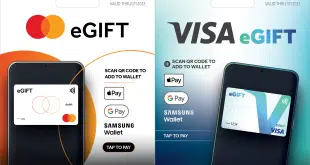For almost three decades, the Internet evolved in stealth until it exploded on the public scene and changed everything. Right now, something called “The Internet of Things” is being hatched in geeknests around the world, and it will change everything—again! Sixty billion “things” are projected to combine into a network of entities that never sleep, never tire, and are not subject to most other human frailties. These interconnected things will serve us in ways that exceed the bounds of today’s imagination.
Your car will detect that you have just parked and start paying parking fees. When you drive off, you will be able to beat traffic by shifting to a higher dollar-per-mile toll lane, with the toll auto-paid from your car. Your electric vehicle will be charged by underground magnets, with the electricity paid for with a counterflow of “Money of Things.”
Your refrigerator will realize you are running low on eggs, and order more from the neighborhood grocery. While you sleep, your artificial-intelligence agent will pounce on investment opportunities that meet your criteria, and report to you when you wake up. Today’s free “Google search” will be replaced by knowledge-acquisition agents roaming in cyberspace and ceaselessly compiling all the fee-based news you care about. Meanwhile, “things” attached to your skin will report your health data to a medical center. My students add uses to this list every time we meet!
Sixty billion interconnected things—how will they self-organize? Exactly in the same way 7 billion people manage their ecosystem: with money. Welcome to the “Capitalism of Things,” where we, the people, hand over our money to the things that serve us, instruct them on our terms and preferences, and set them free to negotiate, deal, pay, and get paid on our behalf.
In this new world, the credit card, the electronic wallet, and monthly statements will be as anachronistic as typewriters and dial phones. Money will have to be redefined, reminted, and re-secured. And of course, like everything else in cyberspace, money will be digital. Digital money—a digitized version of the dollar, the Yuan, the euro, and so on—will be the currency du jour. Much as you cannot order a meal and pay with seashells today, despite their consistent use as money for hundreds of years, so you will not be able to pay for the four seconds of charging your car receives on the road by flashing a payment card or running an EMV dialogue. A pay-as-you-go counterflow of bits will be the one and only way to pay, which in the near future will mean to survive.
Indeed, the Money of Things will cut through the Bitcoin debate: digital money yes, Monopoly money and Bitcoin money, no. And since the cyberworld is really integrated (while global politics lags way behind), the Money of Things will have to cut through today’s currency-exchange barriers. The way to do that is to trade with a digitized “basket” that would be a combination of the prevailing fiat currencies. I have discussed this technology in the Handbook of Digital Currency (Elsevier, 2015).
Money of Things, being money, will have to be easy to store (bits naturally are), it will have to endure (since it is information, not a physical entity, durability is a given), and it will have to be secure. Secure? Everything bitty has been hacked and smacked, beaten, robbed, and faked—how in the world will MOT be secure?
The answer may surprise you: Security by Humility. Checking under the hood, we see that today’s cryptography features the opposite of humility. It is based on arrogance. We weave complicated algorithms that we cannot undo and assume that our adversaries will be as limited as we are, unable to solve a puzzle that frustrates us. It’s time to admit this folly, and turn to the one solution, the one approach, that ensures parity against a more intelligent hacker. This solution is randomness. “Stupidity + Randomness = Smarts” is the title of a YouTube video that elaborates on this potent concept.
The volume of IOT transactions will steadily grow, and Money of Things will evolve to become Money of Everything. If your car can pay a toll in two milliseconds, why should you wait 20 seconds for the “Remove Your Card” prompt on the EMV terminal?
—Gideon Samid • Gideon@BitMint.com





